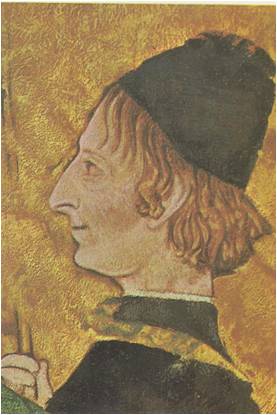China, that immense portion of East Asia bounded by the chilly Amur River and the hot jungles of Indo-China, by the Pacific Ocean and the Himalaya Mountains, was the most populous country on earth. For thousands of years, China had had a highly developed civilization. Its people thought of their land as the world itself; to them, it was the Middle Kingdom between the upper region, heaven and the lower region, hell, which was made up of all other lands. They considered foreigners nothing but barbarians. Only a few Europeans had entered China since the Middle Ages and the Chinese had scornfully refused to trade with them. The Europeans remembered China, from accounts like those of the Venetian traveler Marco Polo, as a land of fabulous wealth. They longed to lay hands on this wealth and during the nineteenth and early twentieth centuries, the imperialist powers managed to get some of it. Despite its size, China was very weak. In the family of nations it was like a fat old grandfather whose head was so full of old-fashioned actions that he could not understand the boisterous young people around him. The old man was sick, too — with “internal disorders.” For the Chinese were more and more discontented with their Manchu emperors. The Manchus were the latest imperial dynasty in a line stretching back over two thousand years. Their ancestors from Manchuria had conquered China in the seventeenth century and many of their subjects still thought of them as foreign barbarians. From time to time, the Chinese rebelled against them and tried to drive them out. China had troubles of its own even before the foreign imperialist came. The greatest uprising against the Manchus was the Tai-Ping Rebellion of 1850. Twenty million people died — as many as lived in …
Read More »Gentlemen, Scholars and Princes 1400 – 1507
One day in the fifteenth century, the Turkish potentate of Babylonia decided to send gifts to the greatest ruler in Italy. He consulted his counselors and men who had traveled widely in Europe, asking them who best deserved this honour. They agreed that one Italian court outshone the rest and that his court must surely be the home of Italy’s mightiest sovereign. They did not name Milan, the home of the proud Sforza, nor Florence, the city of the clever Medici. The most magnificent court in Italy, they said, was at Ferrara, the capital of the dukes whose family name was d’Este and to Ferrara the Turkish potentate’s ambassadors carried the presents. Ferrara was small, a mere toy state in comparison to Milan or Florence. Actually, it was not an independent state at all. Like several of its neighbours in central Italy, Ferrara had for centuries belonged to the Church. Its duke paid an annual tribute to the pope for the privilege of governing his family dukedom himself. Even so, the Turkish potentate’s advisers had made no mistake. No court in Italy could match the splendor of the court commanded by the dukes of little Ferrara. During the Renaissance, there were many such small cities that won fame. It all depended on their rulers — the ambitious dukes or counts or sometimes, commoners who had gained riches and power. With their money, they, too, hired fine artists, sculptors and architects; they, too, collected manuscripts and things of beauty. So the small cities were as much part of the new age as Florence or Milan. In that new age, Ferrara was a place of old fashioned grandeur. Its dukes, the d’Estes, had come to power in the last days of chivalry. In 200 years, the d’Estes had turned Ferrara into a …
Read More »The Fall of Byzantium A. D. 992-1453
THE LONG struggle between the churches of the East and the West was only one of the many serious problems that weakened the empire and led to its downfall. Trade was another of its problems. Much of goods imported from the eastern world was sold to the west through Byzantine markets. A ten percent tax was collected on an imports and exports as well as on all goods passing through the Bosporus. This was one of the empire’s most important ways of collecting taxes. However, this rich flow of tax money began to get smaller and smaller in the tenth century after Basil II gave Venice, the chief port of the west, a reduced tax rate. He did it with the understanding that the large fleet of Venetian merchant ships would police the Adriatic Sea and carry troops for the empire whenever necessary. Then, in the eleventh century, the empire lost Asia Minor to Turks of the Seljuk tribe. Asia Minor was the backbone of the empire. It had served as a buffer state against invaders from the east and had provided food and materials for the empire, as well as manpower for the army. It was a serious loss from which the empire never recovered. In the twelfth century, Thebes and Corinth fell to Norman invaders. They carried off the silkworms and weavers to Italy, thus breaking the empire’s monopoly on Silk. Byzantium also suffered at the hands of the crusaders, who conquered a part of Asia Minor from the Turks as they passed through on their way to Palestine. Instead of returning this territory to the empire, they divided it and made independent kingdoms out of Antioch and Edessa. From then on, much of the eastern trade passed through these cities and was carried to the West on …
Read More »


